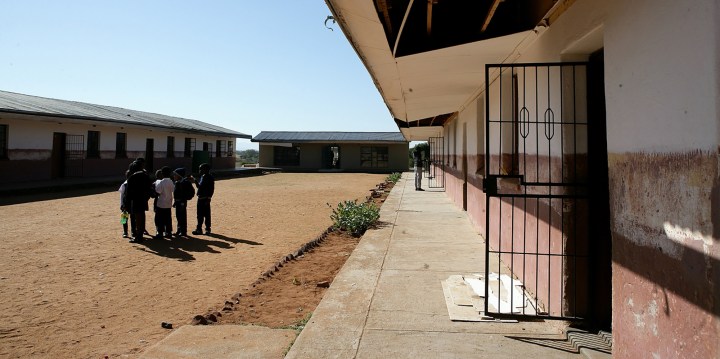EDUCATION
Advocacy group tells Parliament how South Africa can halve the school dropout rate

Around 40% of learners who start school in Grade 1 will exit the schooling system before completing Grade 12, according to the Zero Dropout campaign – an advocacy group aiming to halve SA’s dropout rate by 2030.
School dropout rates are recorded in every country, but South Africa’s are at abnormally high levels.
“South Africa’s dropout rate is a crisis,” said Merle Mansfield, the programme director for the Zero Dropout campaign.
“Regardless of what the dropout number is, we don’t currently have the data set necessary to accurately define or reflect the extent of the problem.”
The campaign’s starting point in tackling the crisis is to first understand what causes learners to drop out of school – what the advocacy group terms “disengagement” – and then offer psychosocial support to those who do.
Mansfield told parliament’s basic education committee on Tuesday that the crisis is pervasive and yet normalised within the education system because there are no meaningful efforts to solve the problem.
“Nationally, we need to have a coordinated response to tackling disengagement and re-engaging learners into schools. Disengagement from school causes disengagement from life,” she added.
According to StatsSA, in the first quarter of 2020 there were 20,4 million people aged between 15 and 34 in the country. These accounted for 63,3% of the total number of unemployed. The unemployment rate within this group was 43,2% in the 1st quarter of 2020.
People between the ages of 15 and 24 are the most vulnerable in the South African labour market as the unemployment rate among this group was 59% in the 1st quarter of 2020.
According to the campaign, there is a strong correlation between SA’s youth unemployment and the phenomenon of disengagement from school.
Moreover, Mansfield explained that since disengagement is a process, there are monitoring mechanisms that could be used to help identify and prevent learners from dropping out of school.
“Early warning systems allow us to flag and identify learners who are at risk, and proper data tracking and monitoring allows us to see if we can adjust that risk,” she said.
This means understanding learners’ psychosocial needs and status, which play a critical role in understanding why learners drop out of school.
Why do learners drop out of school?
The advocacy group argues that there are push-and-pull factors that influence a learner’s decision to drop out of school. The ‘push’ factors often involve poor learner outcomes (this may include failure or repetition of grades).
The ‘pull’ factors, on the other hand, involve factors such as peer pressure, teenage pregnancies and family or community issues.
Although the committee, including the department of basic education which attended the meeting, welcomed the campaign’s input, the department’s director-general Hubert Mweli criticised the group’s “linear” approach to tackling dropout rates.
“We have warned academics, researchers and intellectuals that a linear approach in analysing dropout rates in a system as big and complex as ours, is extremely problematic.
“One of the flaws is to assume that all learners who have not gone out of the exit grade have dropped out,” Mweli said.
“In a sector as big as basic education, psychosocial support is but one lens to use to understand dropout rates. There are a myriad dimensions and perspectives, and therefore it might create an impression that this one perspective is the be all and end all, and that is problematic,” he added.
Department researcher, Stephen Taylor, said there was a lot of confusion in public discussions about the dropout rate, throughput rate and real matric pass rate.
“An alternative method of comparing the number of matric passes for a particular year to the 18-year-old population of the same year suggests the figure [of learners passing matric] could be as high as 56%,” he said.
But for now, he added, an analysis of the household survey data indicates that in recent years, at least 50% of learners completed Grade 12.
“But whichever method one uses, there has been a consistent improvement over time,” Taylor said.
Recommendations for govt
“Make dropouts a KPI and set reduction targets,” said Angela Biden, a policy consultant for the advocacy group.
She emphasised the need for better strategies with explicit goals on how dropout rates could be reduced. “The infrastructure is largely in place. It’s engaging with it on another level and focusing particularly on prevention, which is critical.”.
The second recommendation was for the department to consider improving their data monitoring systems.
“Some data monitoring is taking place. We’ve seen people standardise the way they collect data… there is much more cohesion with the way the data is being handled,” she said.
“The problem is there are major gaps. Without interoperability between systems, it becomes difficult to track learners and put a finger on dropout rates,” she added.
Currently, SA’s education system uses SA-SAMS, a system designed to assist with data management of a school by presenting the data in various reports such as quarterly learner class attendance, learner performance and failures, to name a few.
The third recommendation made to the department concerns the “dire need” to provide psychosocial support for learners.
“This is critical. The key is to develop an intersectoral referral strategy that will involve departments like health and social development to help provide psychosocial support,” Biden said.
The committee called for more collaboration between the department and the Zero Dropout campaign. DM


















 Become an Insider
Become an Insider
Comments - Please login in order to comment.